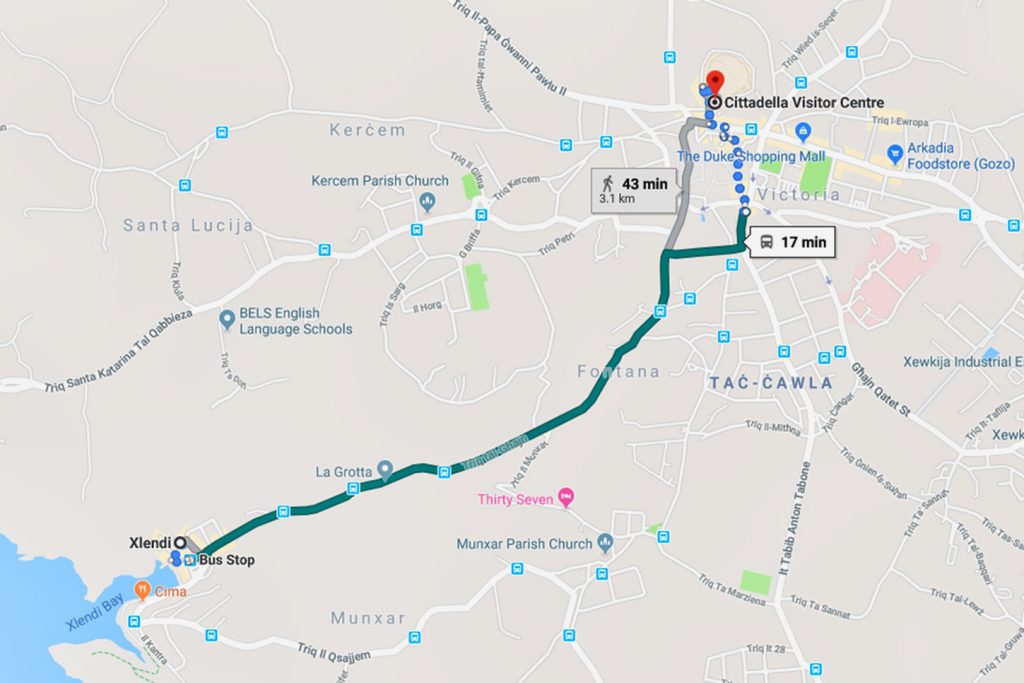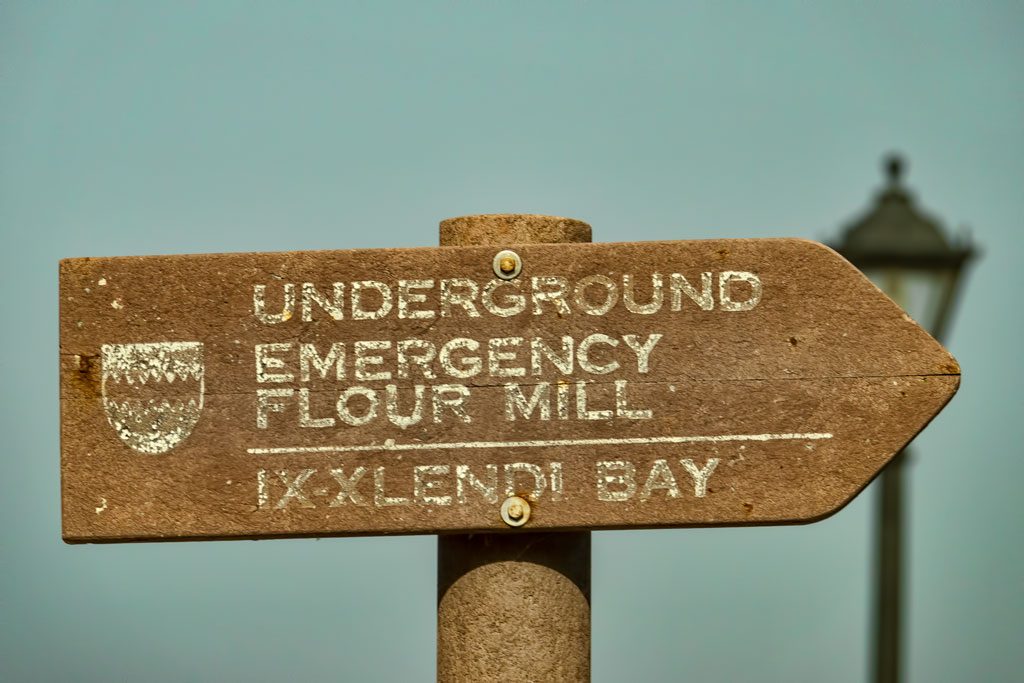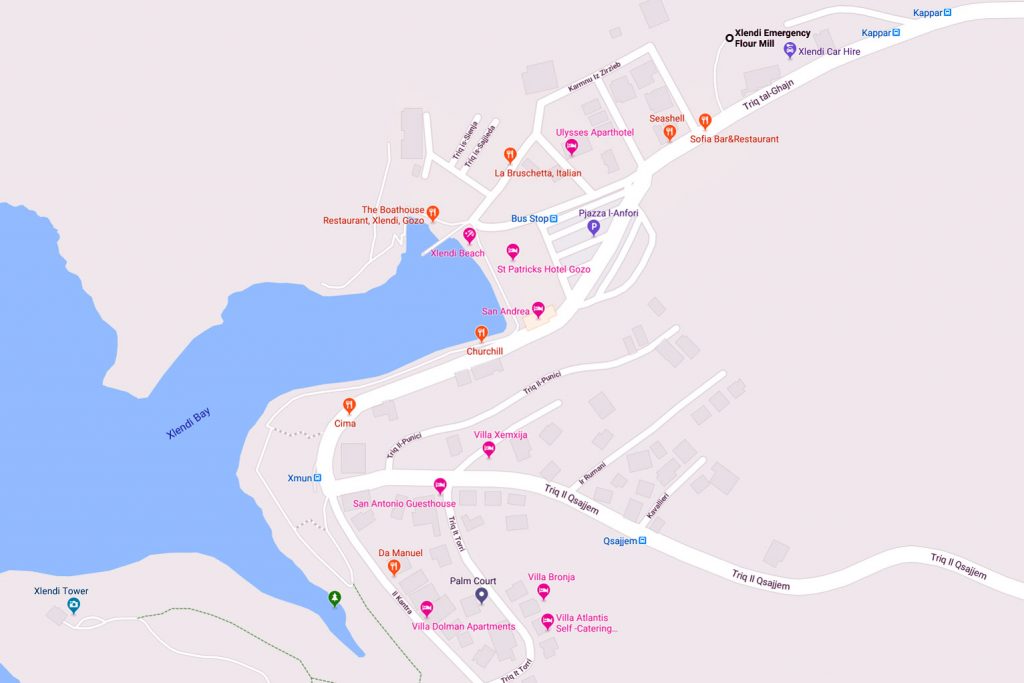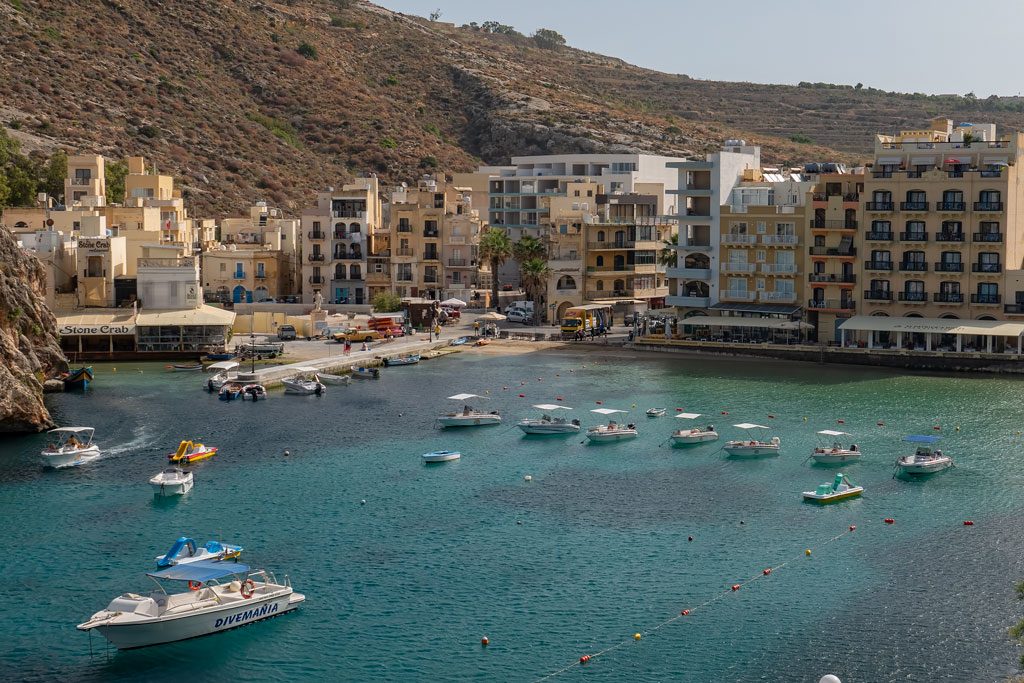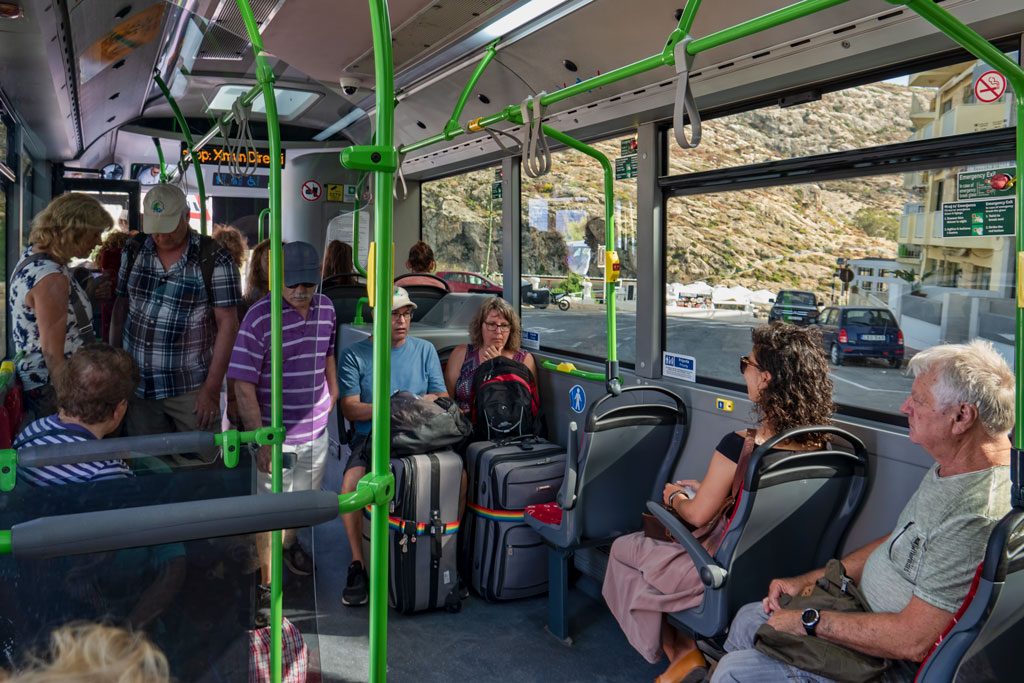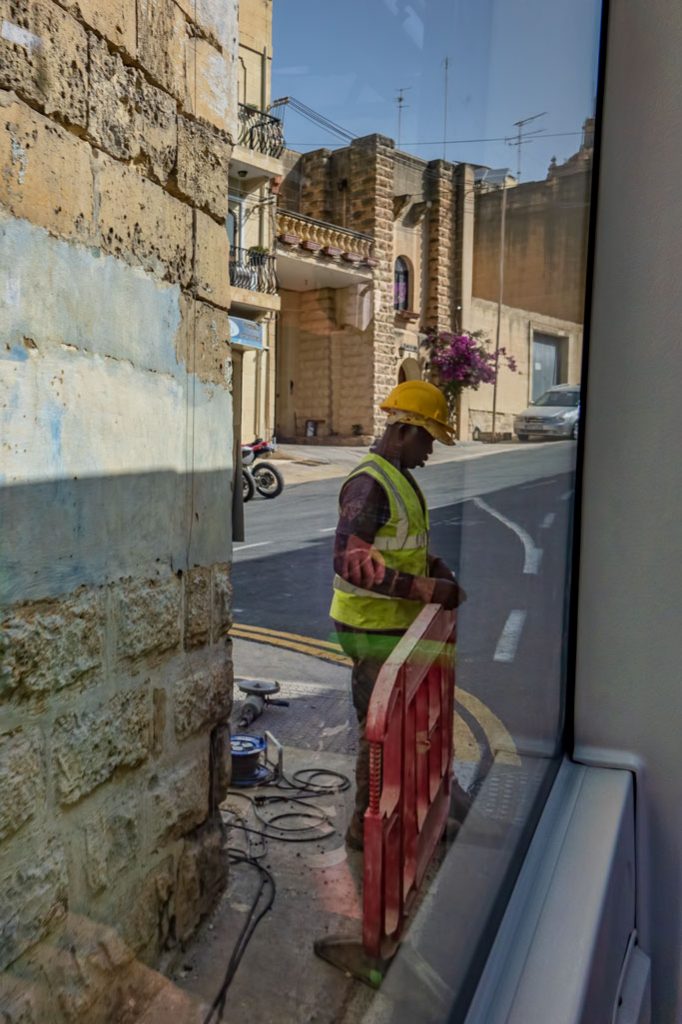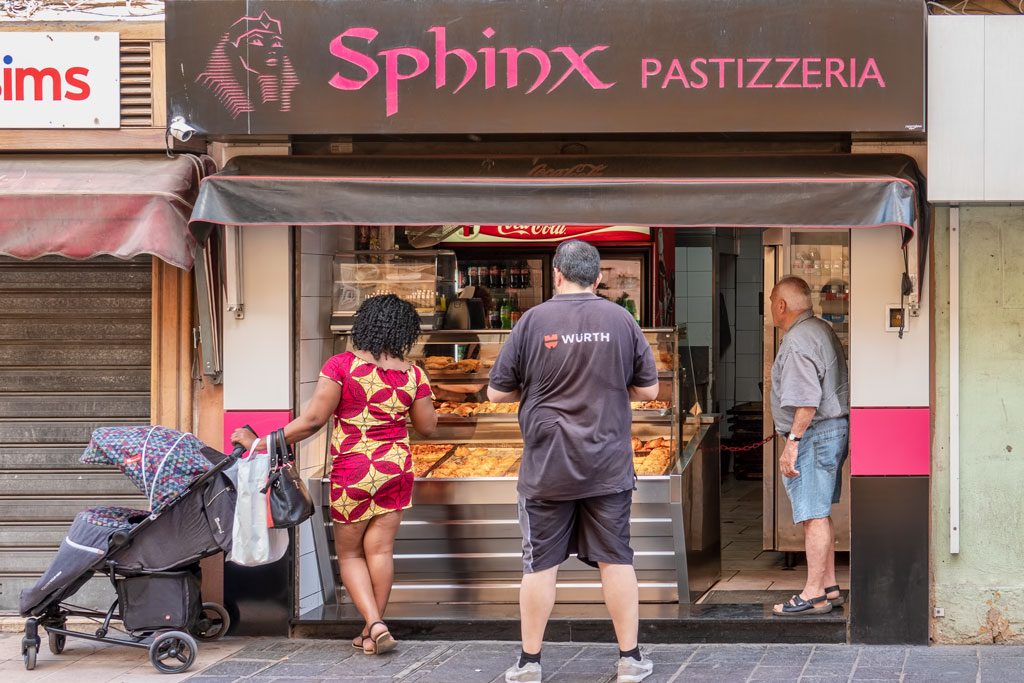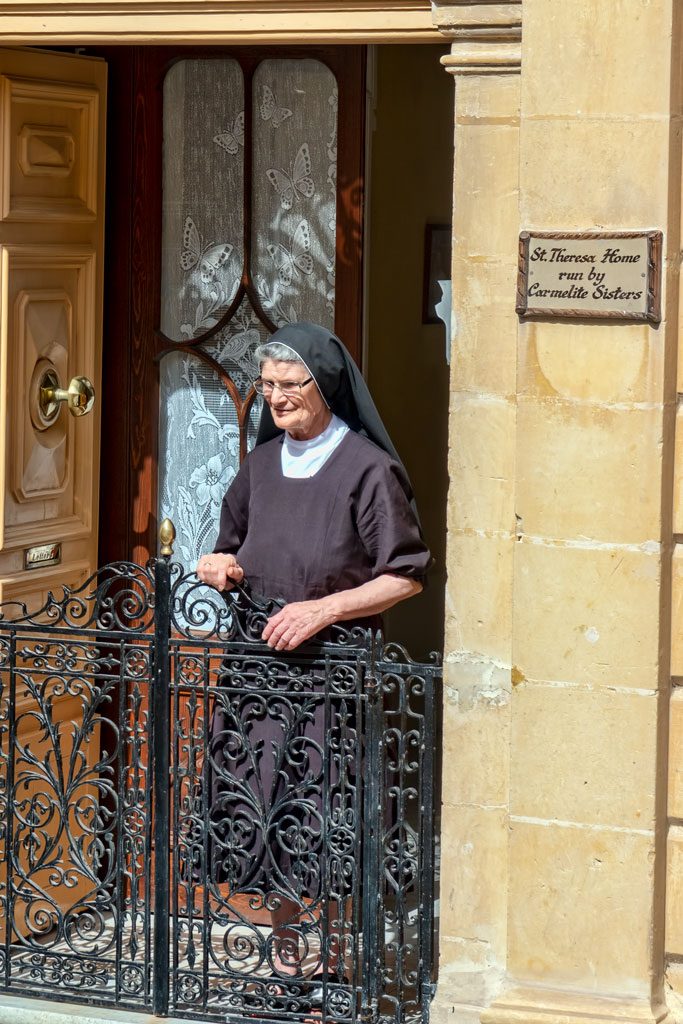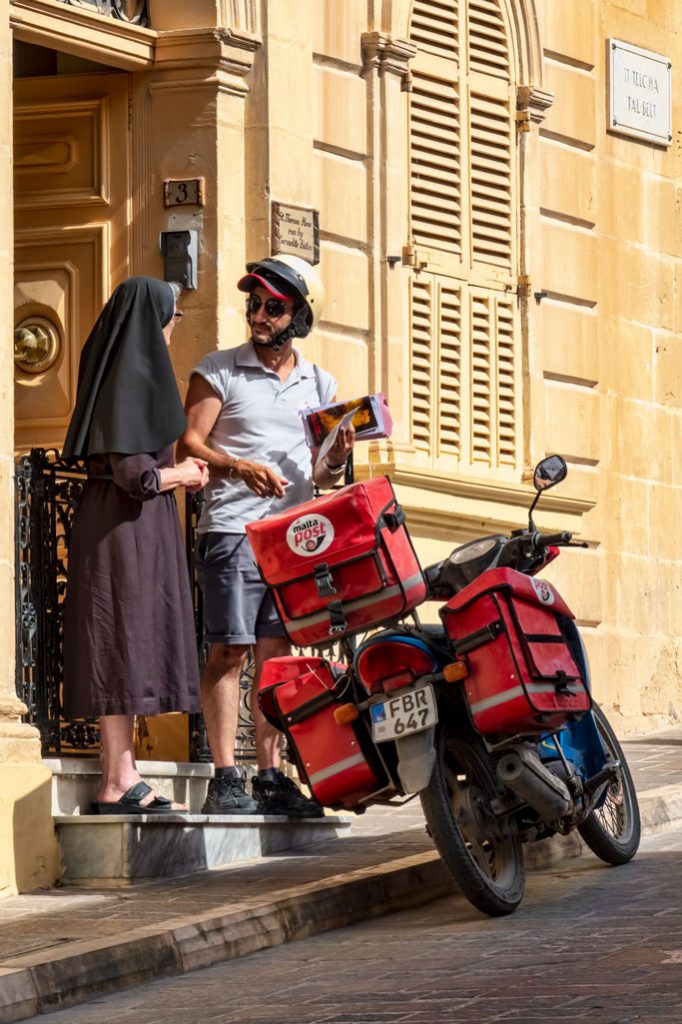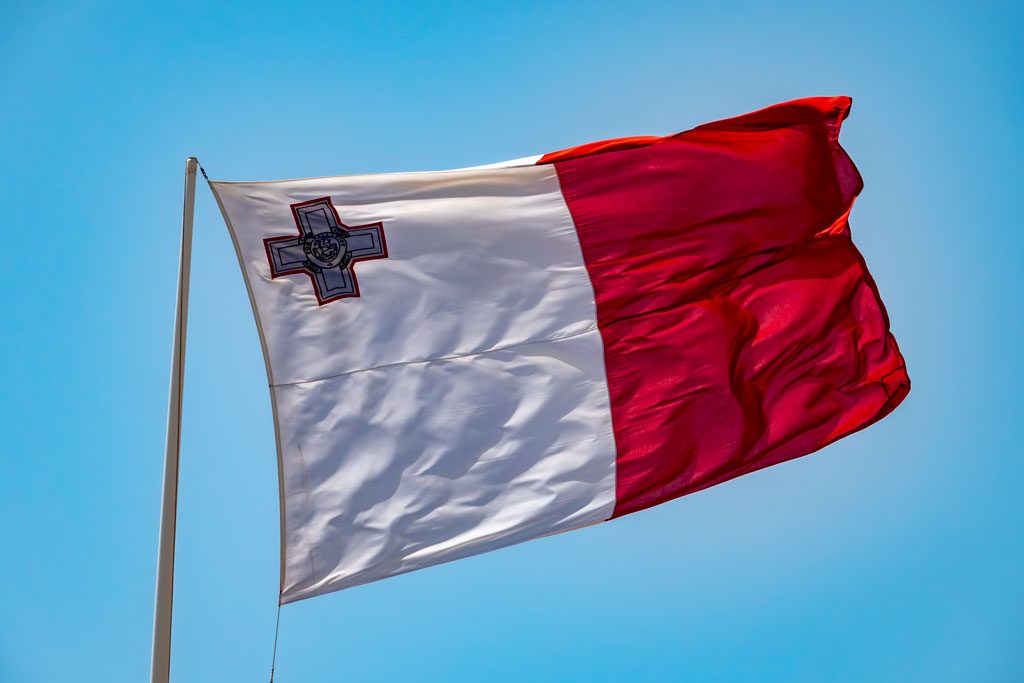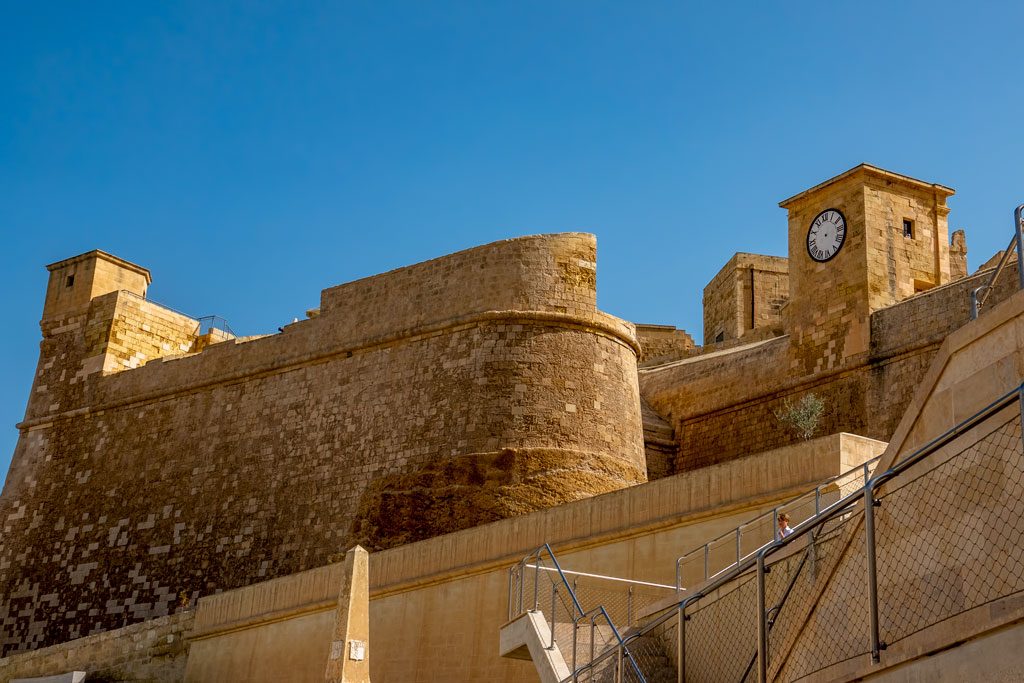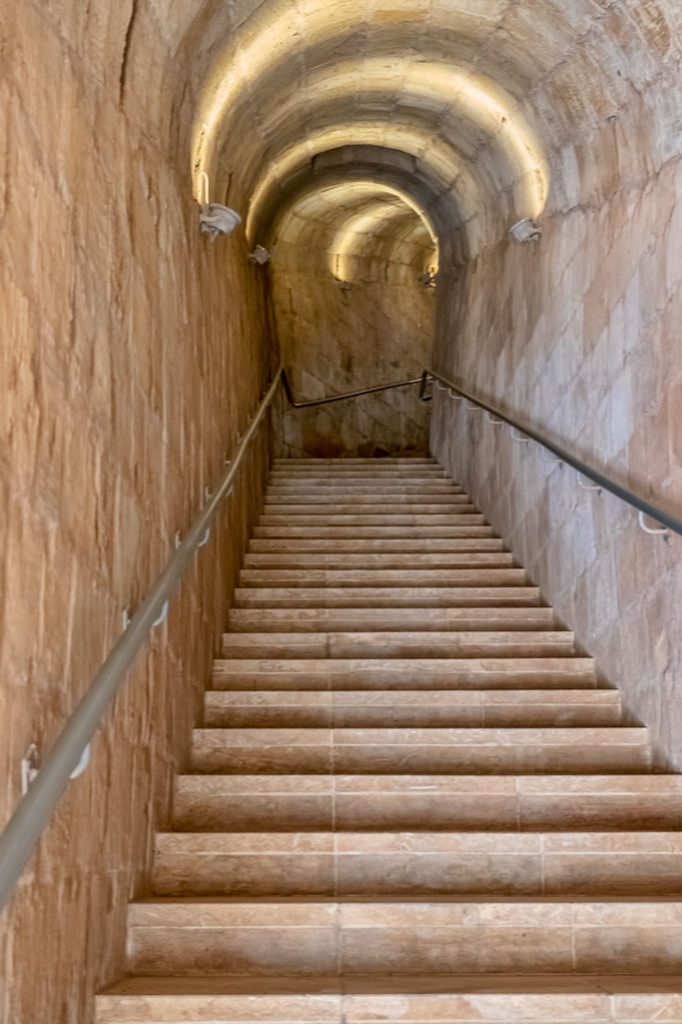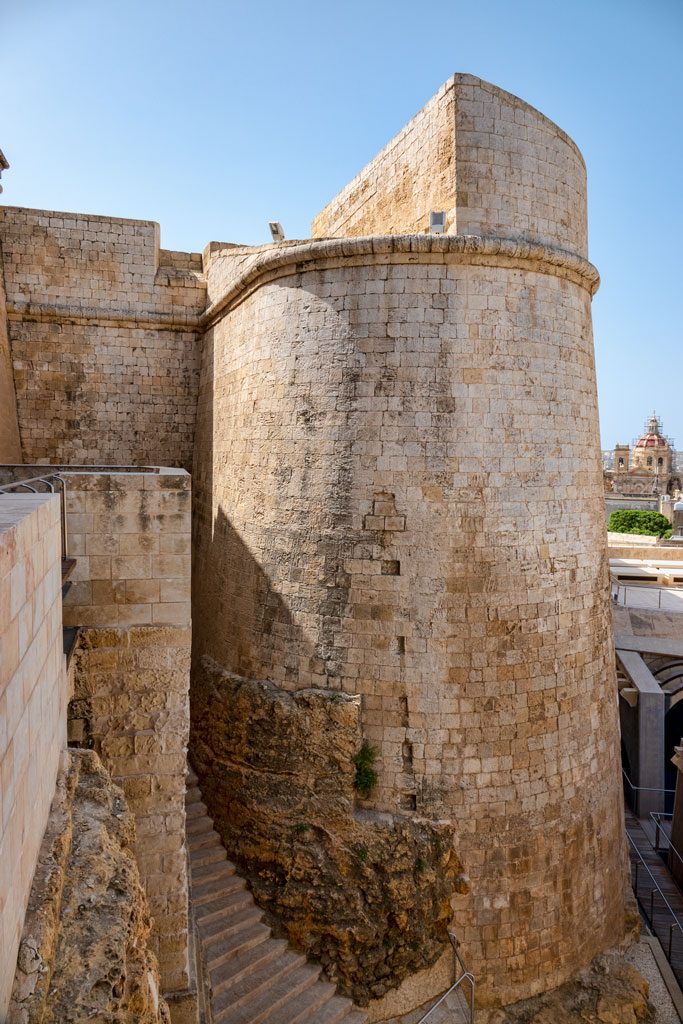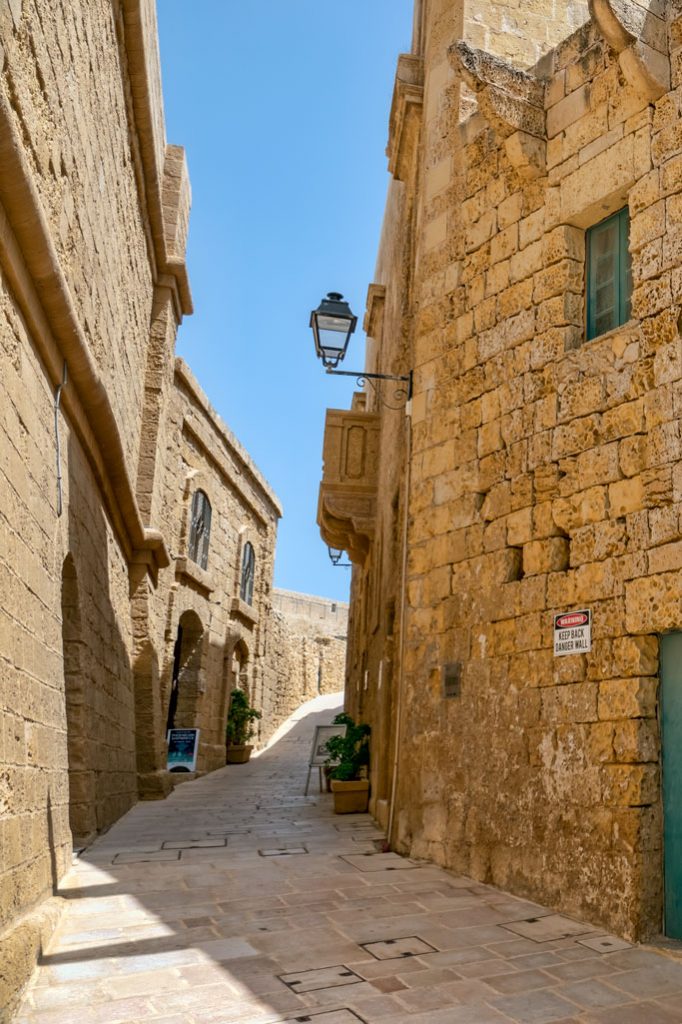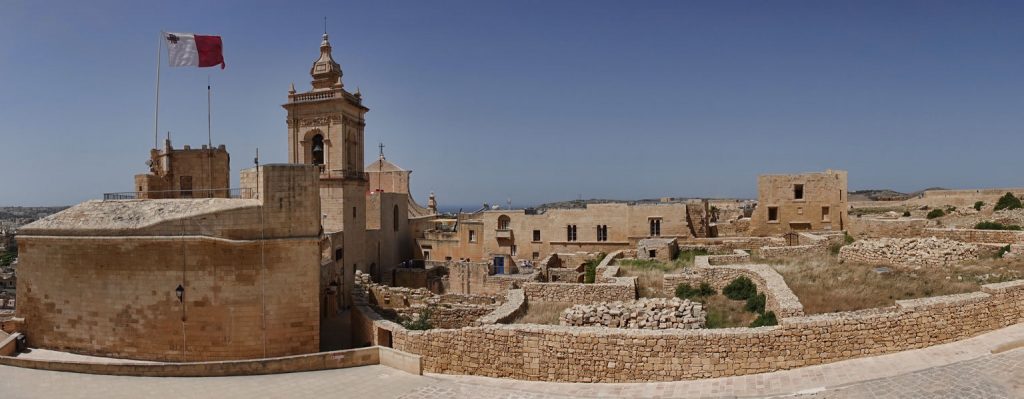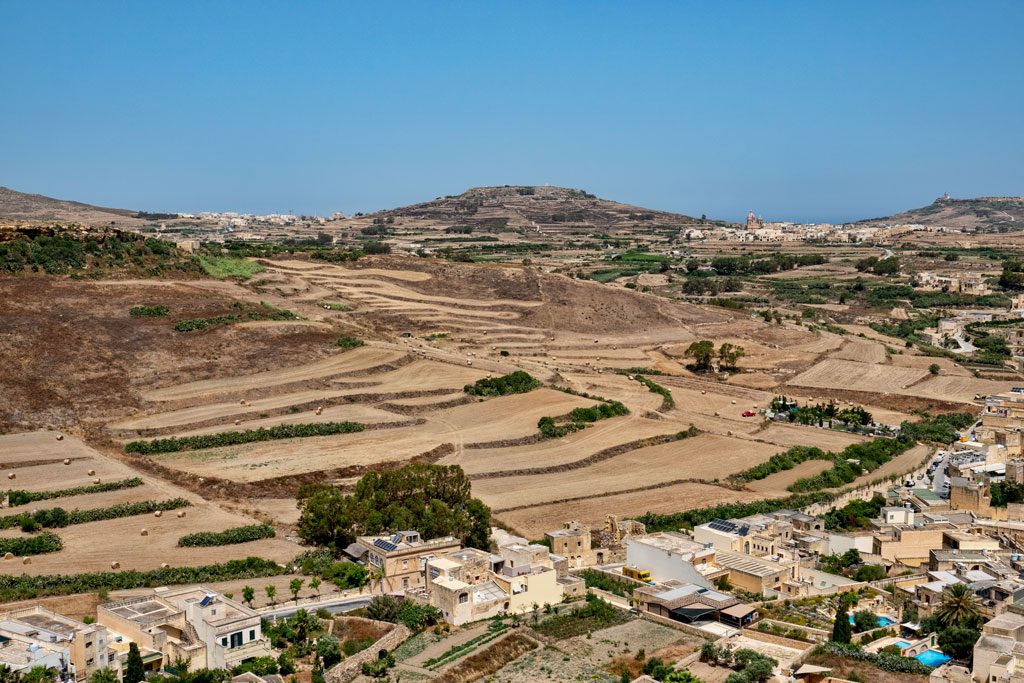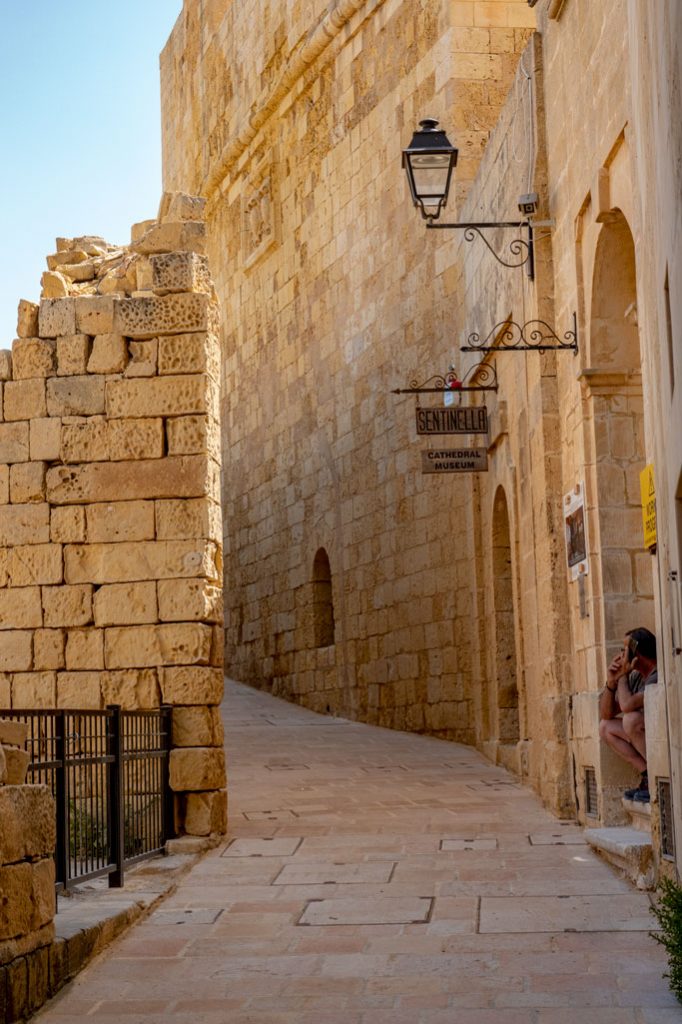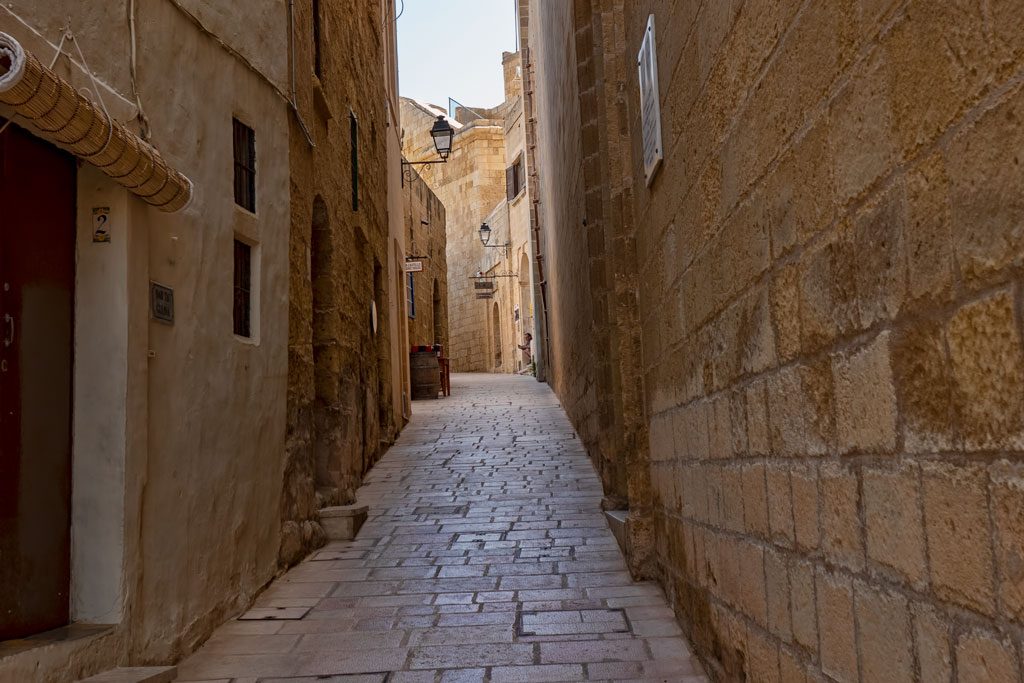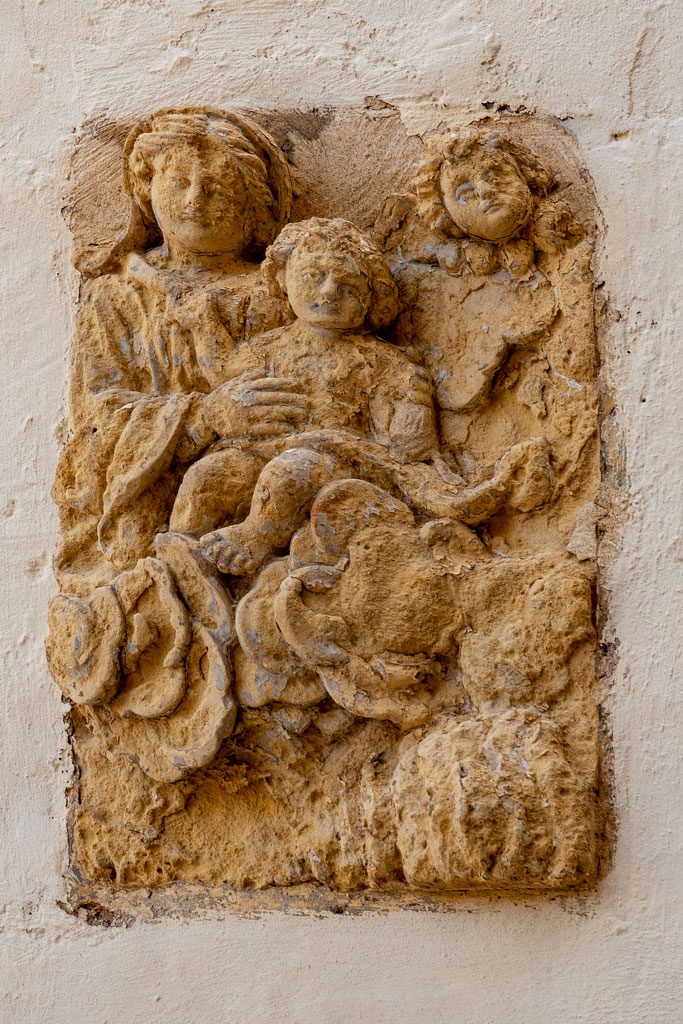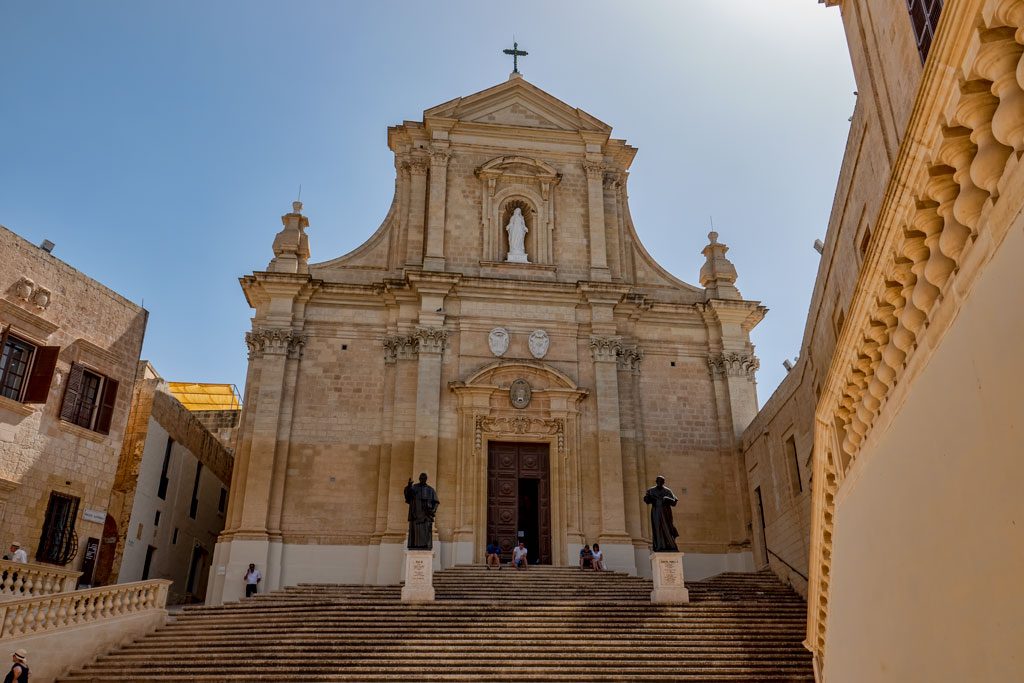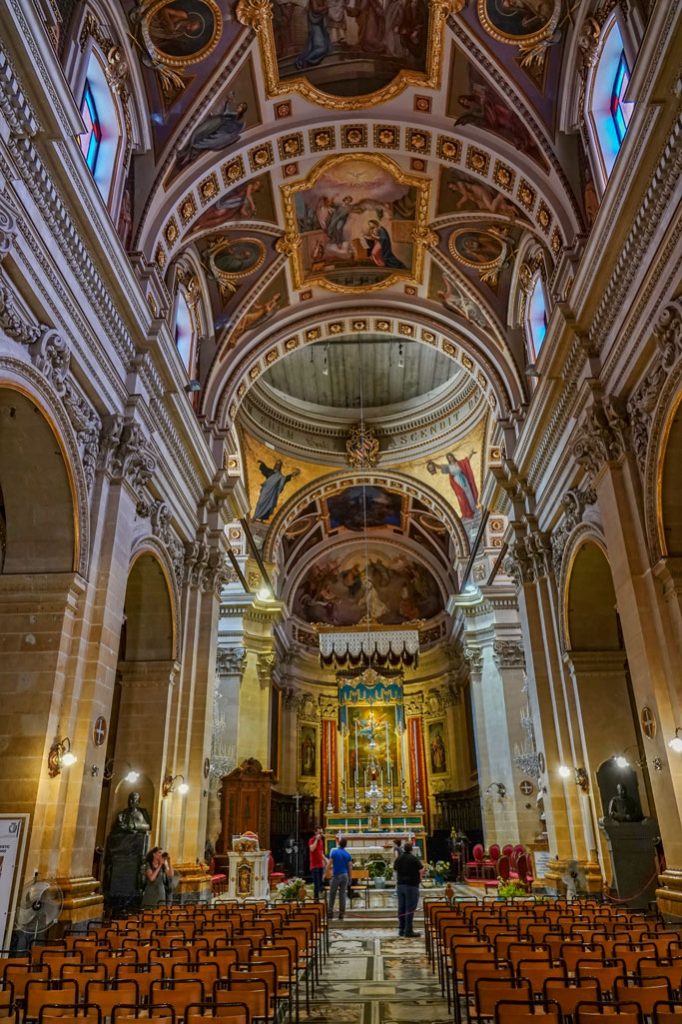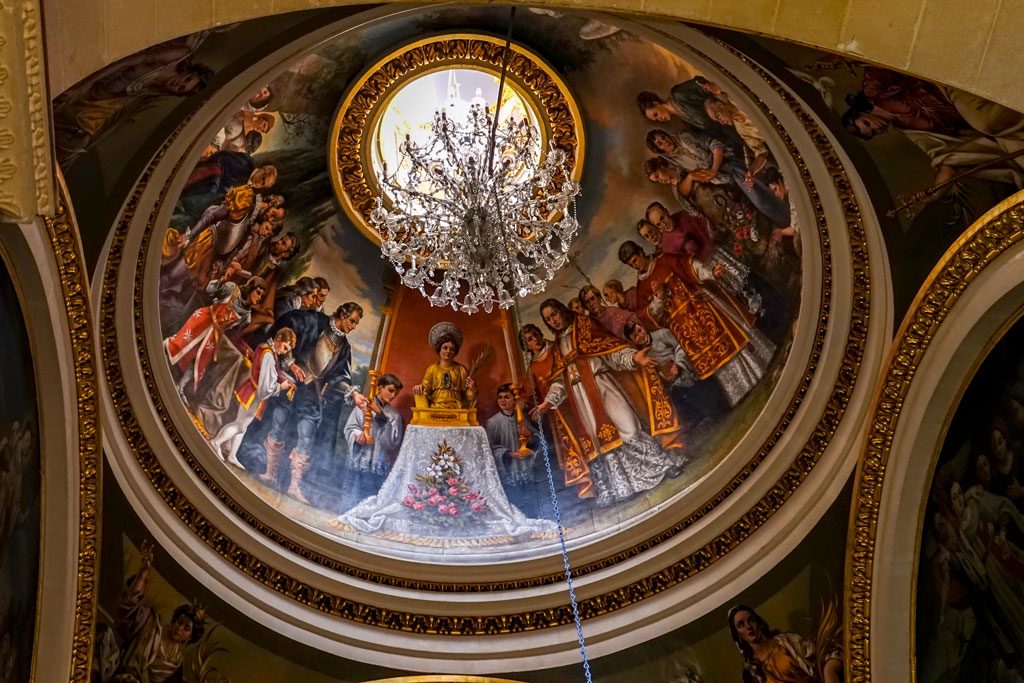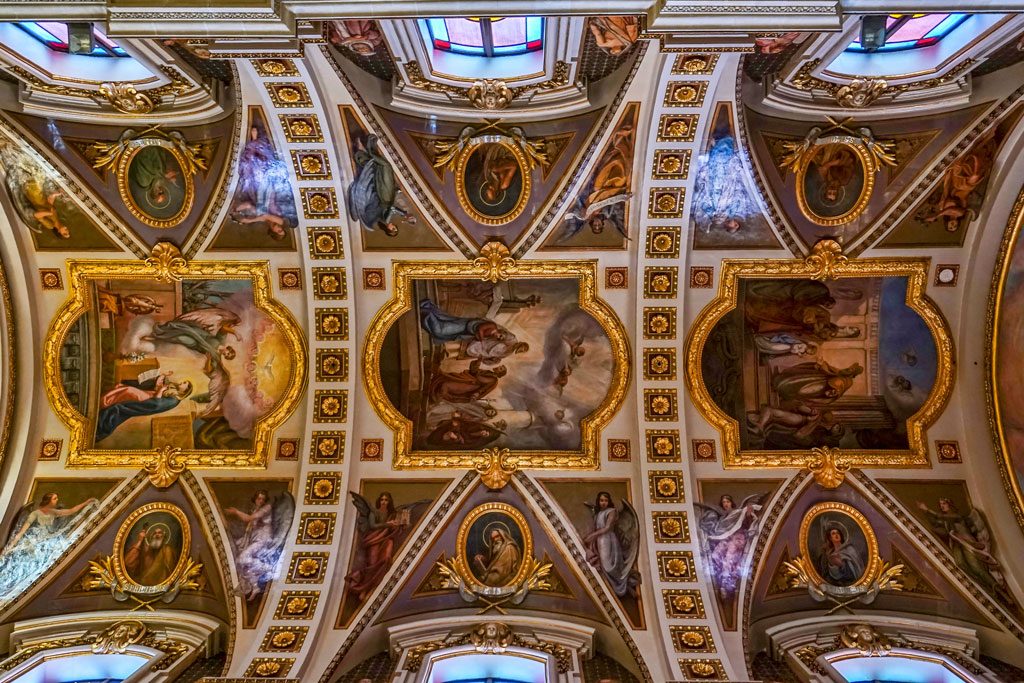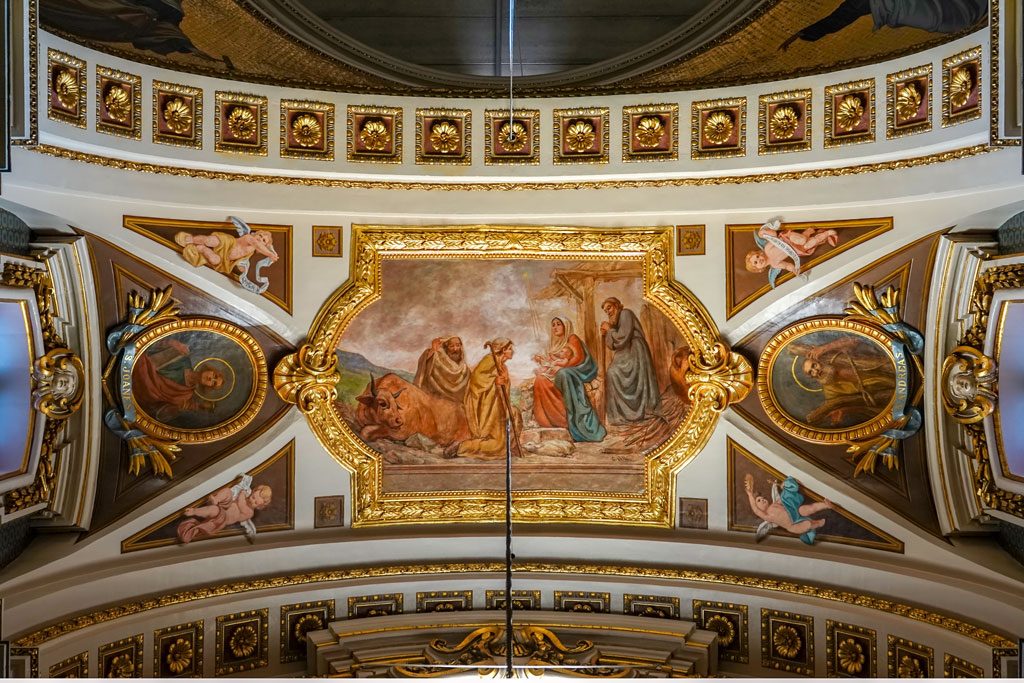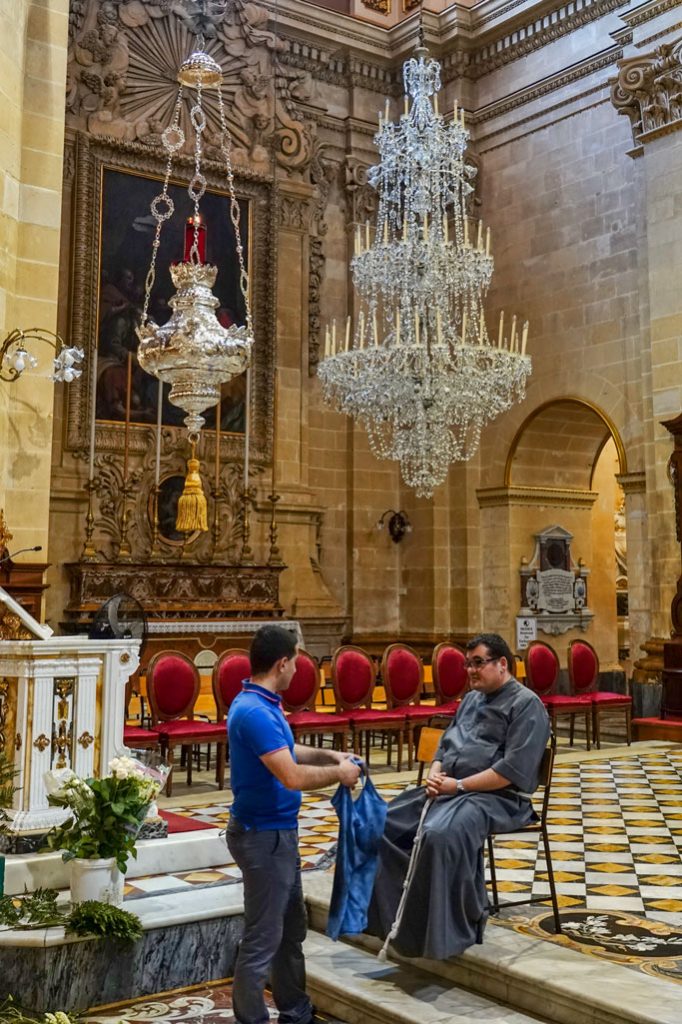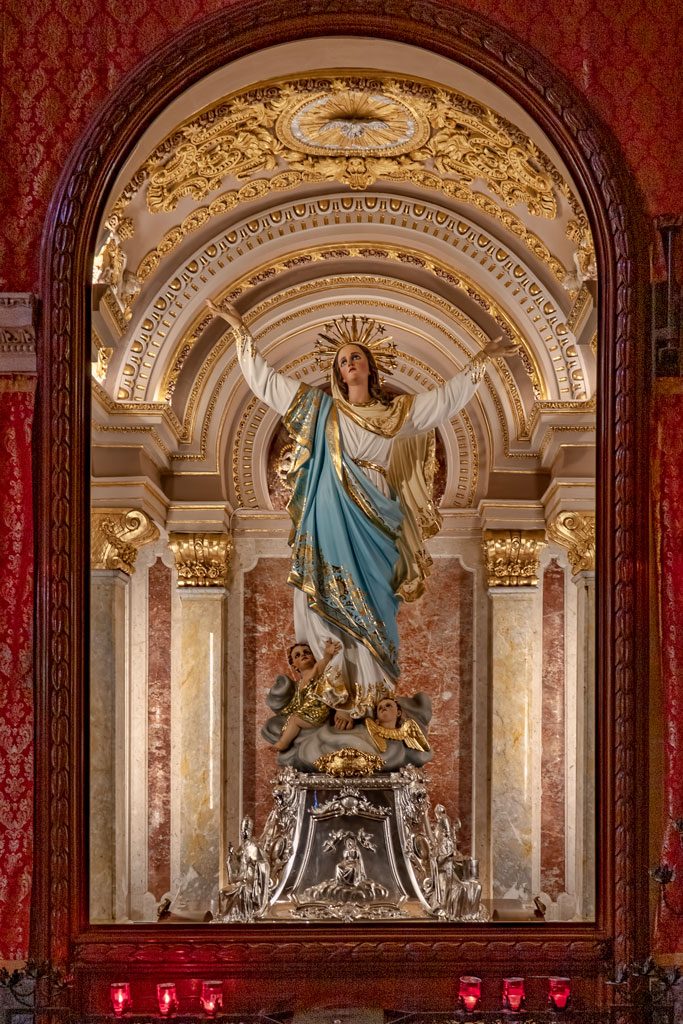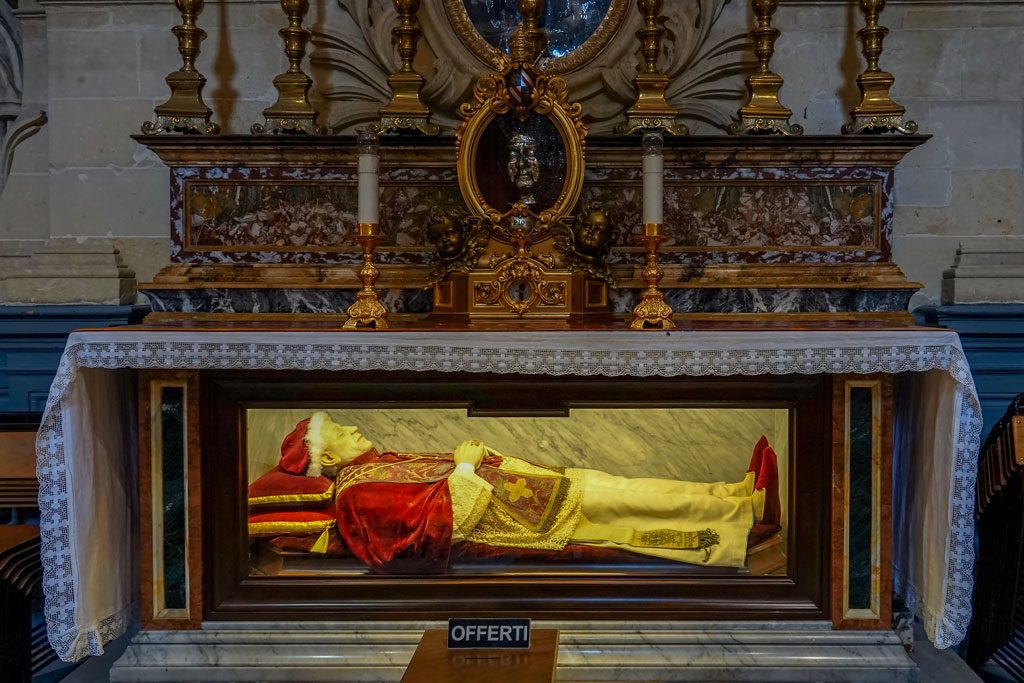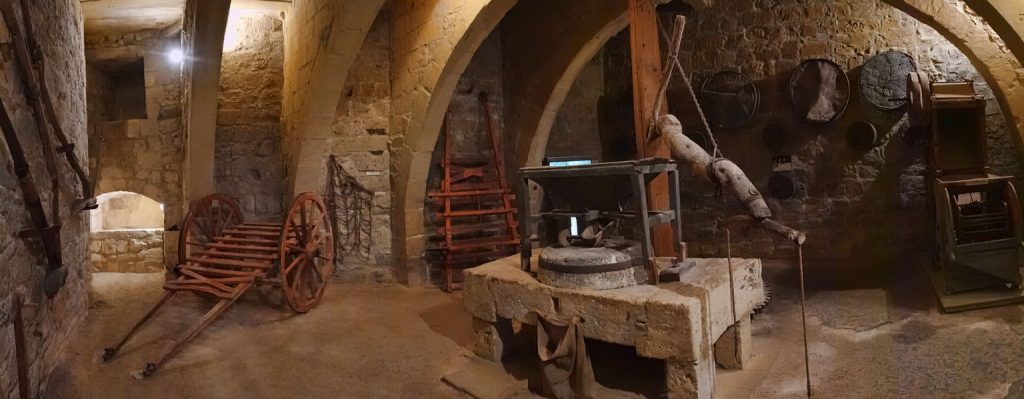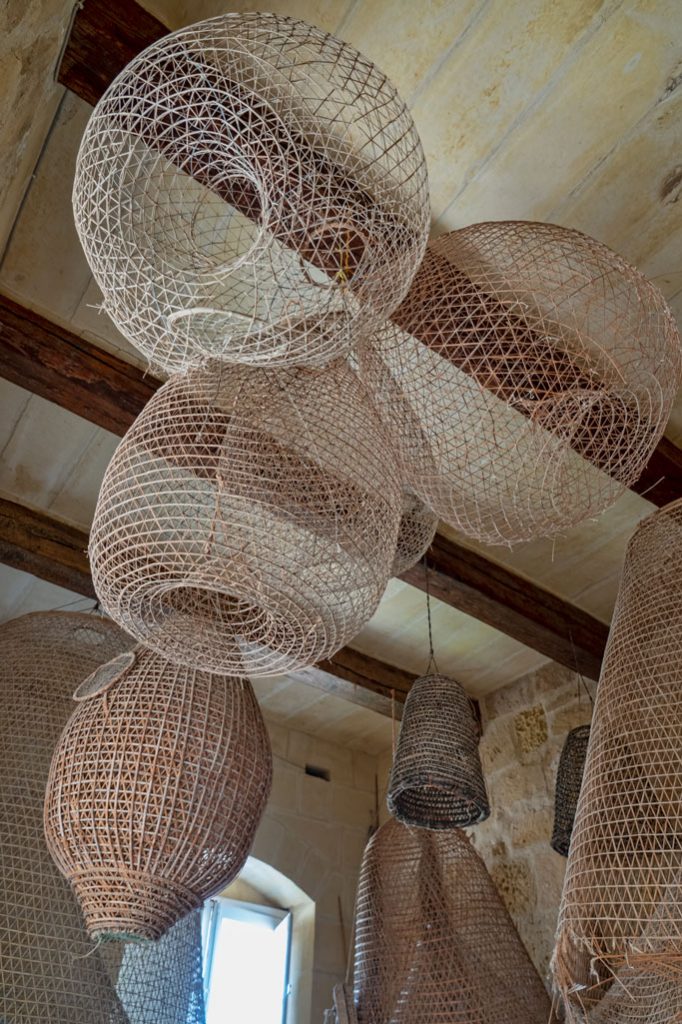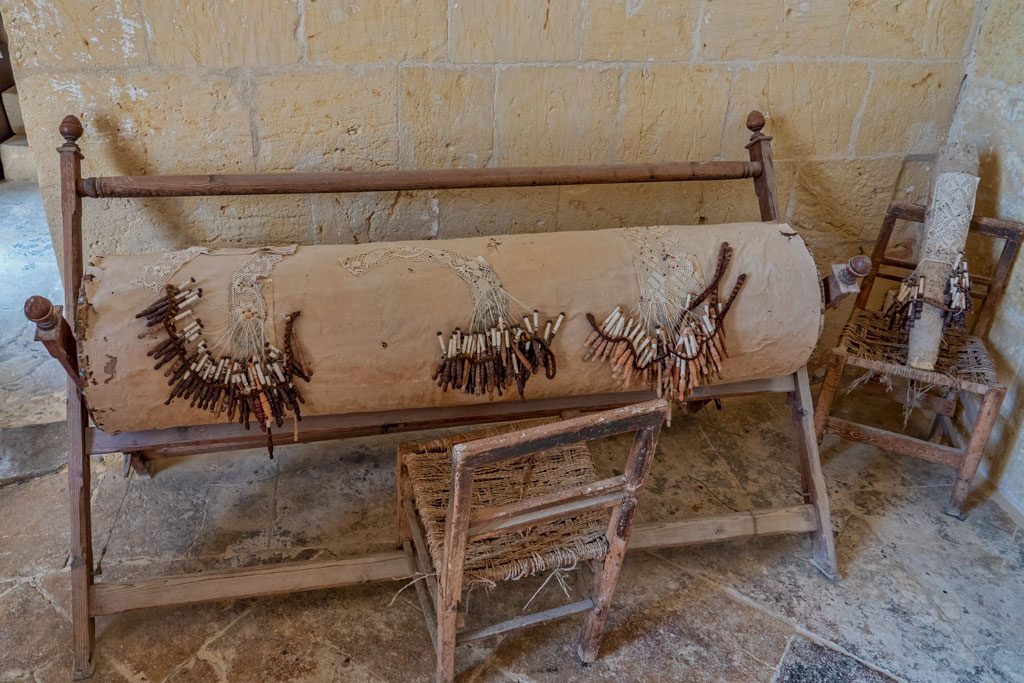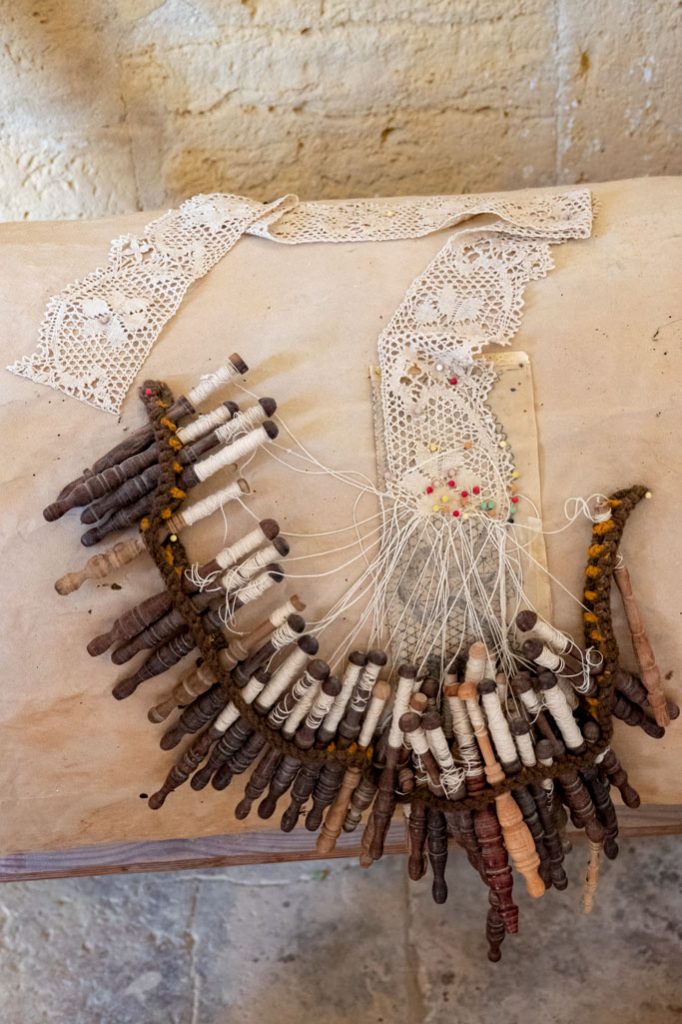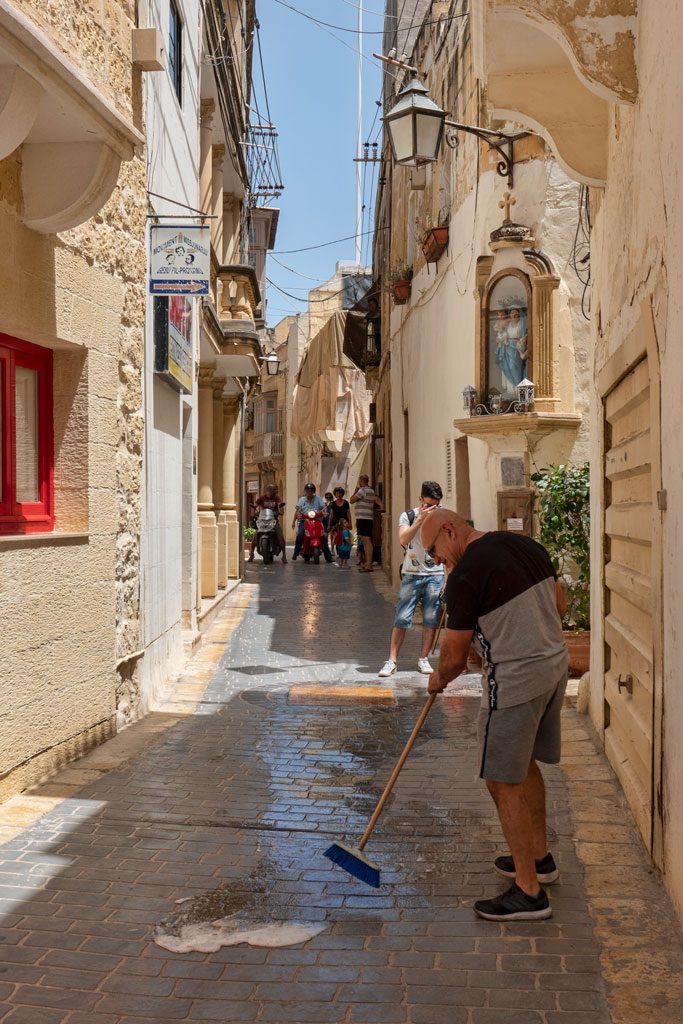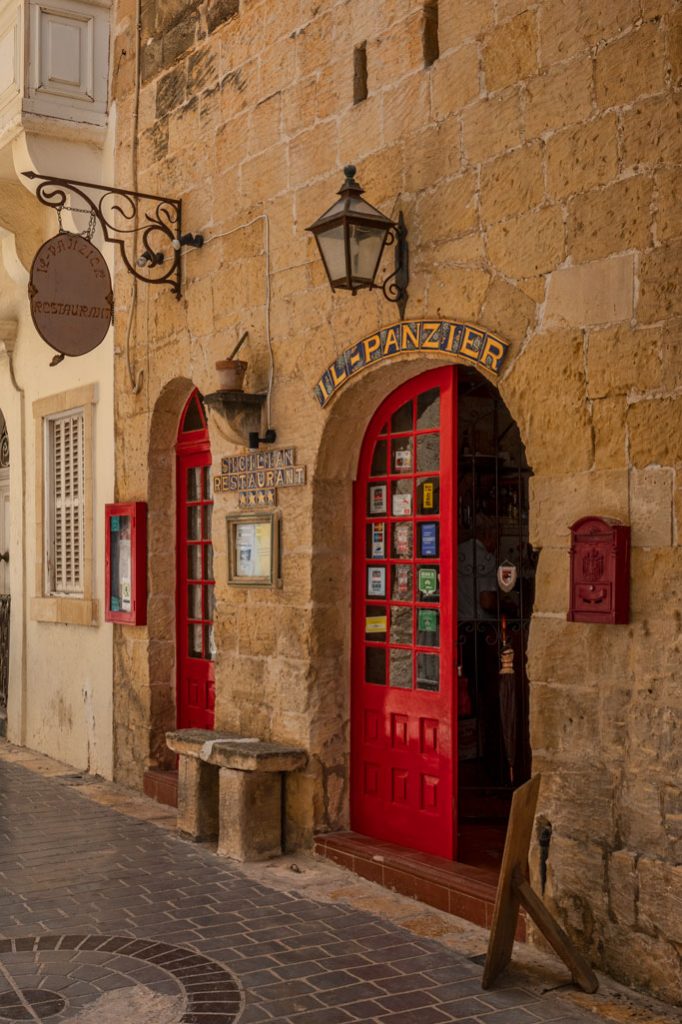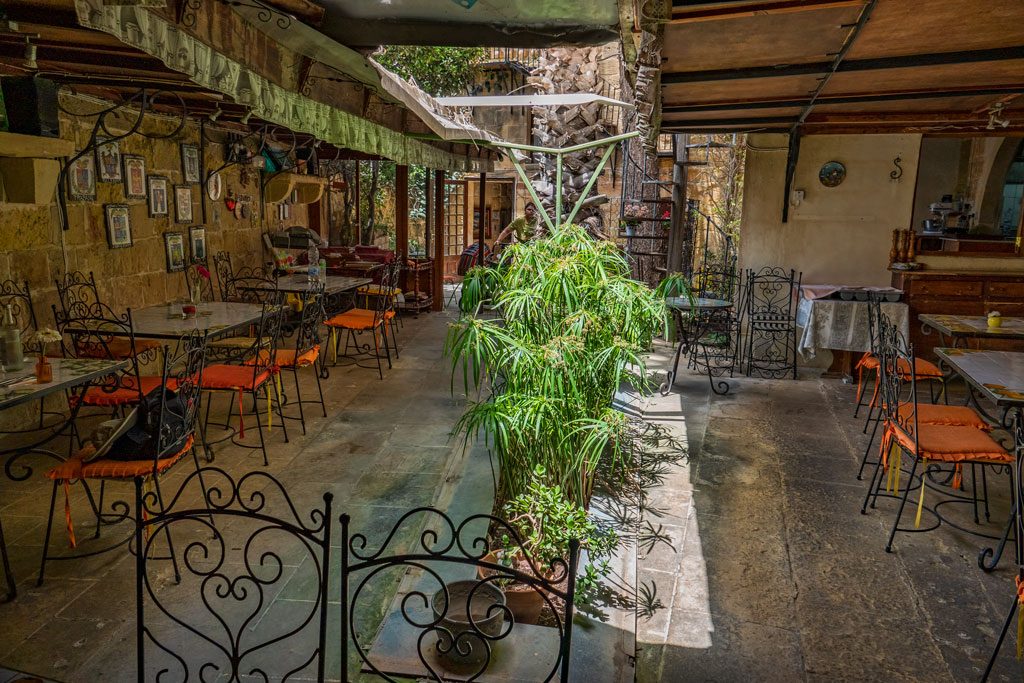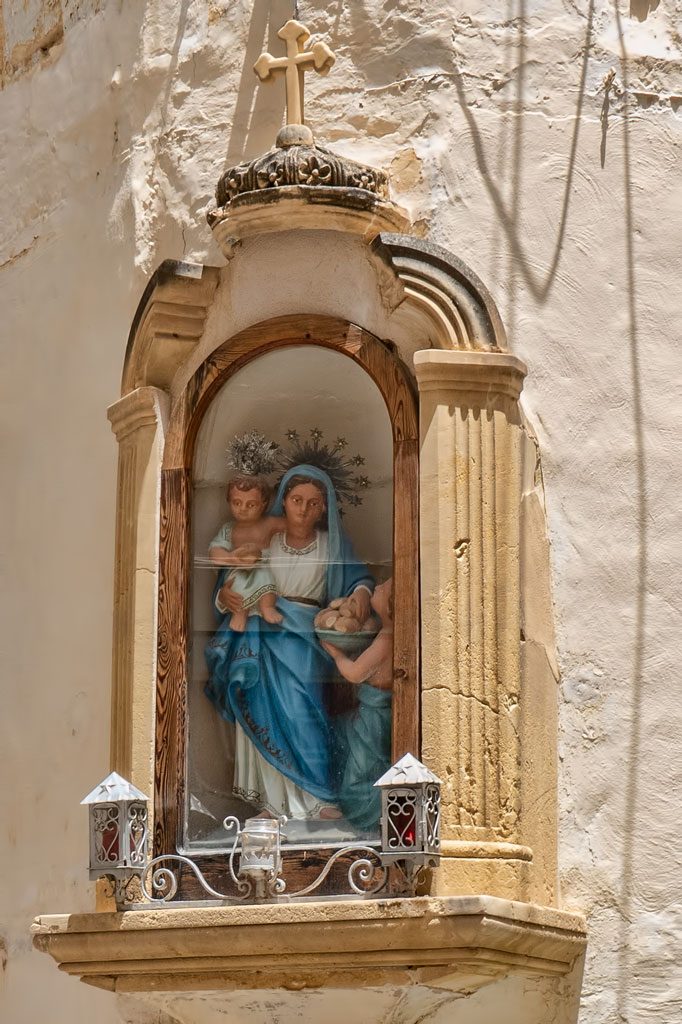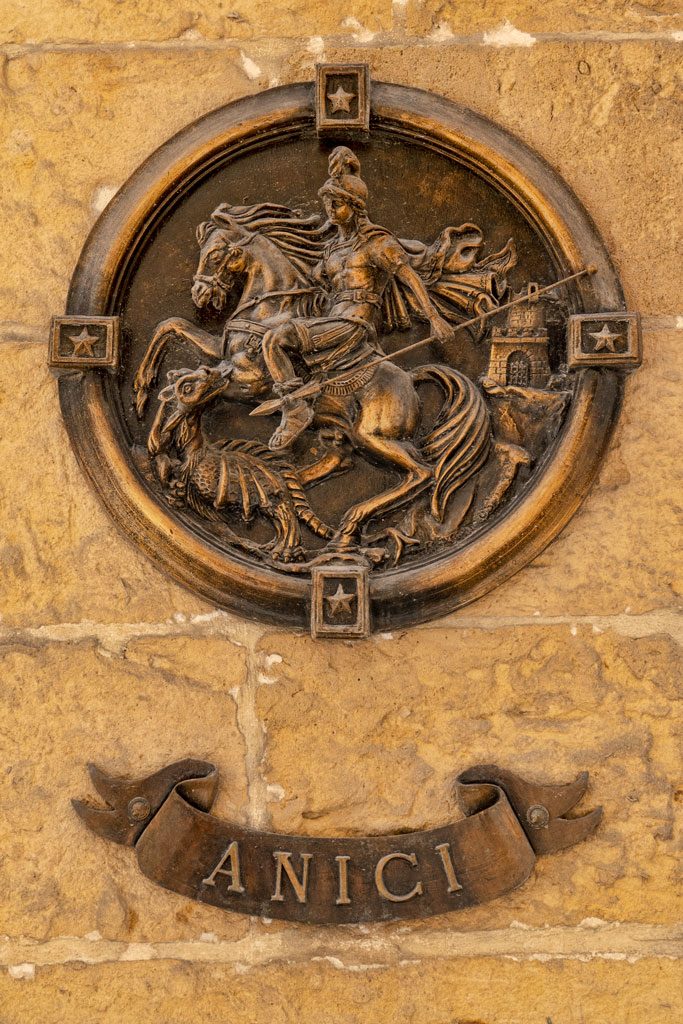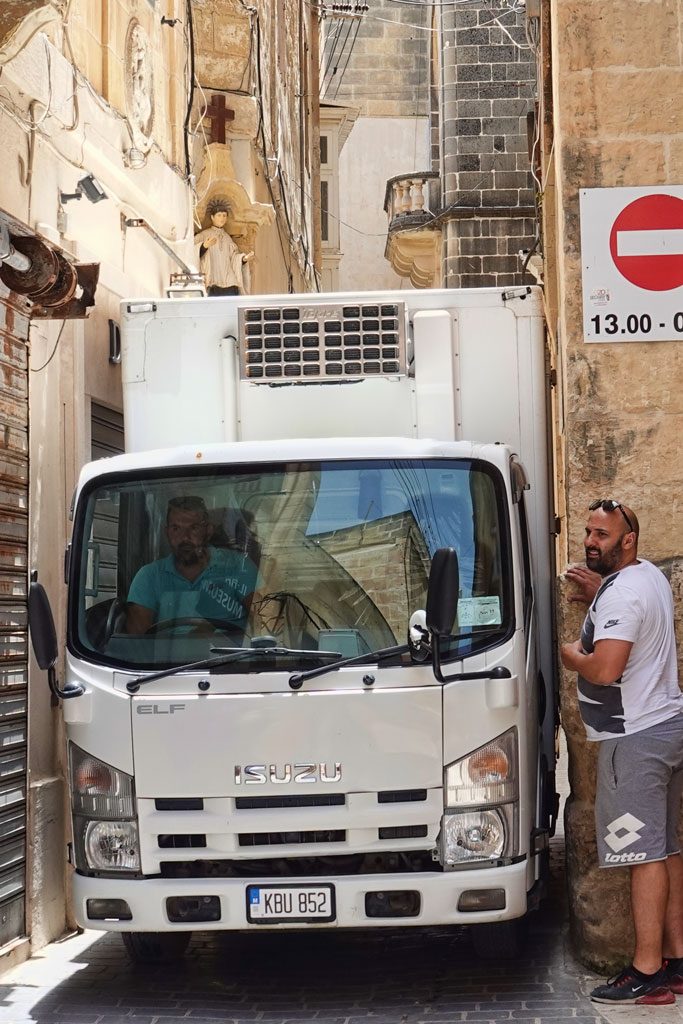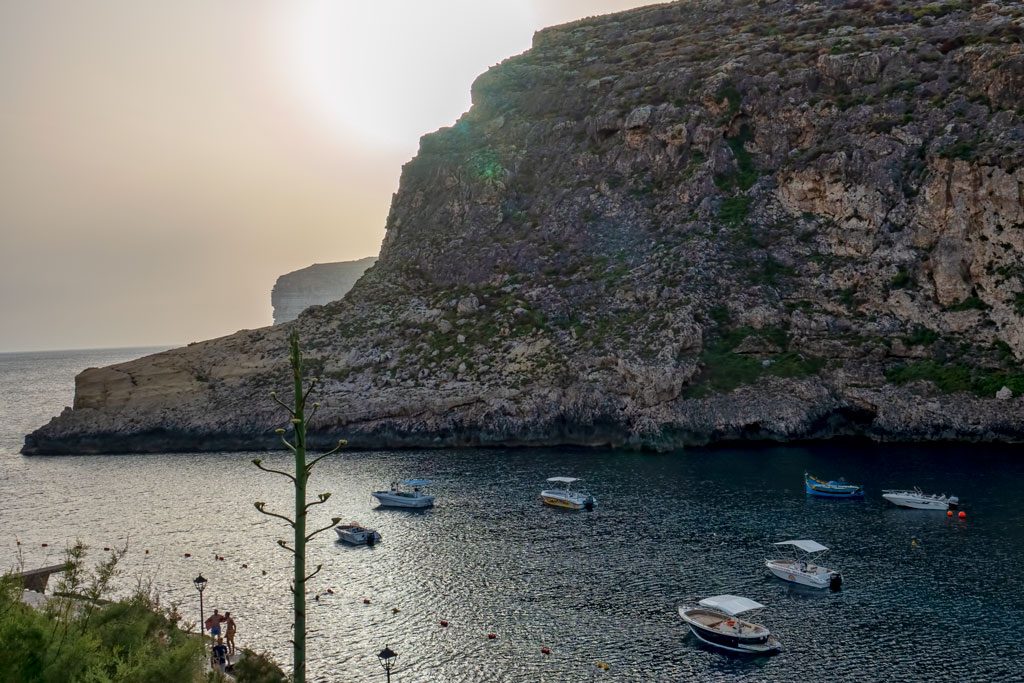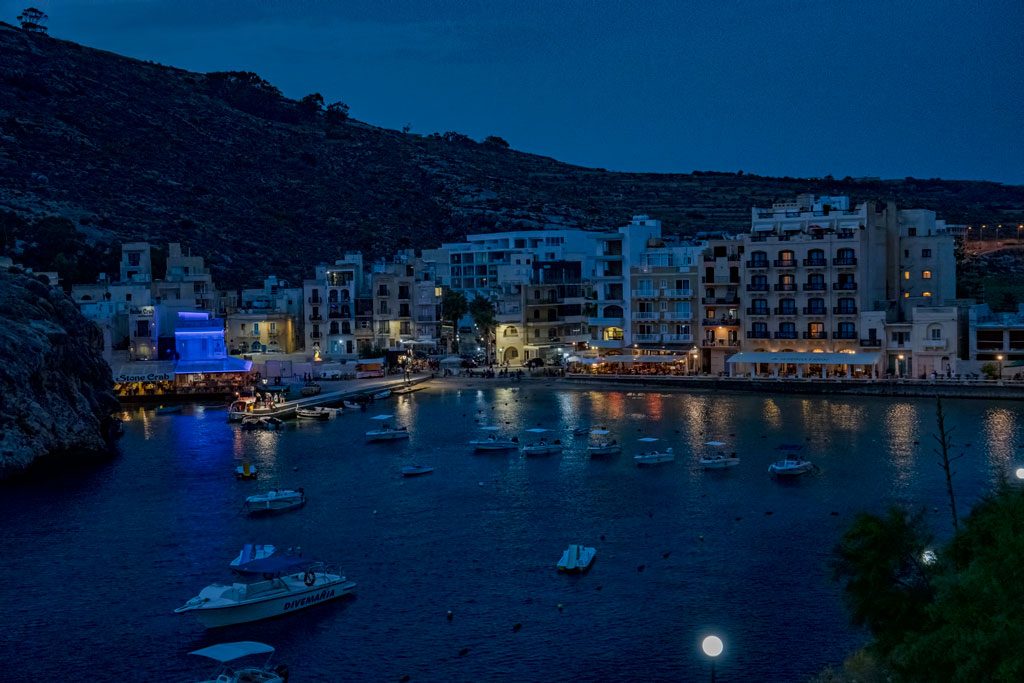TODAY’S TOURING
- We took the local bus, number 306, to Victoria. It was very affordable, €2 each. The streets are very narrow and the bus barely fit through some of them. On the way, we past the Underground Emergency Flour Mill. We didn’t stop to see if we could tour the mill. You don’t find underground mills everywhere.
- Our first stop in Victoria was the Cittadella. We walked from the open air bus station to the Cittadell. Along the way I saw Carmelite nuns getting their mail via a motorcycle mail carrier. it was an uphill walk and we mingled with other tourists on the climb. Our first stop at the Cittadell was the Cathedral of the Assumption. The cathedral was being decked out for the ceremony to ordain new priest. The ceremony was for only two (2) graduates. After the cathedral we toured the Cathedral Museum, the Archaeology Museum, and the Folklore Museum. None of the museums were very large, so it did not take long to tour them.
- After we toured the Cittadella, we walked to the nearby St. George’s Catherdal, but it was closed. Instead, we toured the small streets behind the church; St. Georges Lane. There we found a Sicilian restaurant, Il Panzier, and had lunch. While in St George’s Lane, we heard firecrackers. Each church competes for the loudest explosions during its patron saint festival. There are a lot of churches on Malta. We searched for where the firecrackers were being exploded. However, with the narrow streets echoing the sound, we couldn’t find the location. On our return to the bus station, we saw a truck trying to exit St. Georges Lane into the square. It was sooooo close, but couldn’t make it. This shows even the locals have issues with vehicles in the small lanes. We didn’t stay around to see how the truck backed its way through the narrow street.
- We took the bus back to Xlendi – We knew the bus schedule and waited for our bus to return to Xlendi. At the expected time, bus number 330 arrived and people filled the bus. I was confused because it should have been our bus, number 306. Just as the bus started to leave, I could see the bus display was changed to our bus number. We ran in front of the bus, flagged it down, and got on the bus. The next scheduled bus was two hours later and it was hot. The air conditioned bus ride helped a lot.
- At the apartment – It was laundry day. Having a washing machine in the apartment is a necessity. While we rested, the washing machine did the work. For dinner, we walked to a nearby restaurant, Ic-Cima. While we ate, we enjoyed a great view of the Xlendi Bay at sunset. This was a wonderful way to end the day.
REFERENCES
The Xlendi Underground Flour Mill
Victoria (Rabat) (Lonely Planet)
Victoria, the chief town of Gozo, sits in the centre of the island, 6km from the ferry terminal at Mġarr and 3.5km from the resort town of Marsalforn. It’s crowned by the tiny citadel Il-Kastell, which appears to grow out of its rocky outcrop. The small walled city houses numerous interesting museums. Gozo’s capital is the island’s main hub of shops and services. Named for the Diamond Jubilee of Queen Victoria in 1897, it was originally known as Rabat, and is still called that by many of the islanders (and on several road signs).
Il-Kastell (Cittadella) While the walls surrounding Il-Kastell date from the 15th century, there have been fortifications atop this flat-topped hill since the Bronze Age: it developed under the Phoenicians and later became a Roman town. After some terrible raids on Gozo by the Turks, it became customary for all the island’s families to stay within Il-Kastell overnight, a practice that lasted into the 17th century. You can walk almost all the way around the city walls, for astounding views over Gozo and as far as the sea.
Cathedral of the Assumption Built between 1697 and 1711 to replace a church destroyed by a 1693 earthquake (which was in southern Italy but caused damage as far away as here), the cathedral was designed by Lorenzo Gafa, also responsible for St Paul’s Cathedral at Mdina. The elegant facade is adorned with the escutcheons of Grand Master Ramon de Perellos and Bishop Palmieri. Due to a lack of funds the dome was never finished, but a trompe l’oeil painting makes it look as if it were.
Cathedral Museum This jumble of objects within the Cathedral Museum includes a zucchetto (skull cap) worn by Pope Francis, church gold and silver, some religious art (including a disturbing 19th-century painting depicting the martyrdom of St Agatha), and a 19th-century bishop’s carriage.
Archaeology Museum Victoria’s Archaeology Museum houses some incredible finds. There are some ‘fat lady’ carvings from Ġgantija Temples and Xagħra, that are around 3000 to 4000 years old. There are also Roman anchors, a 3rd- to-5th-century skeleton that was found buried in an amphora, Bronze Age jugs dating from 2400 to 1500 BC, and some fascinating Phoenician amulets in the form of the Eye of Osiris – an ancient link to the symbols seen on Maltese fishing boats of today.
Folklore Museum The Folklore Museum is a lovely maze of stairs, rooms and courtyards: the fine rambling old building itself, dating to 1500, houses a collection of domestic, trade and farming implements that give an insight into rural life on Gozo.
The old town Piazza San George (St George’s Square), which lies immediately behind the main square, is dominated by the imposing St George’s Basilica. Spreading out behind St George’s is the old part of the town, Il Borgo, a maze of little streets and alleys designed to baffle invaders and deflect the flight of arrows and shot. Old stone balconies and religious niches are the things to look for here.
